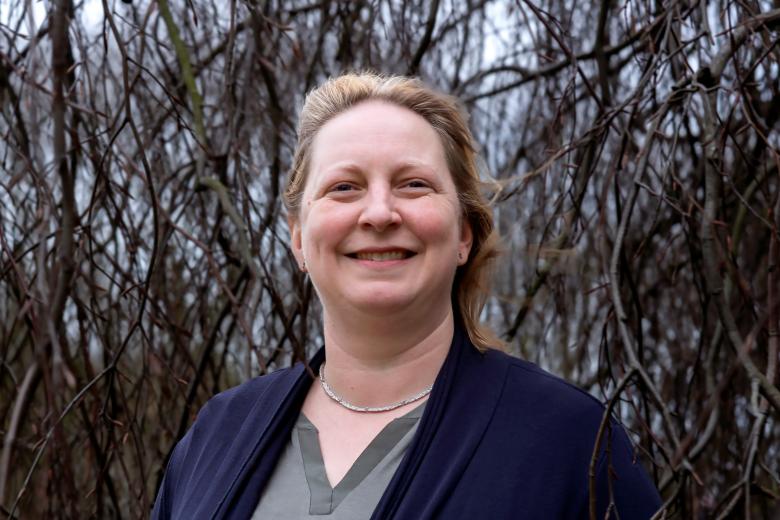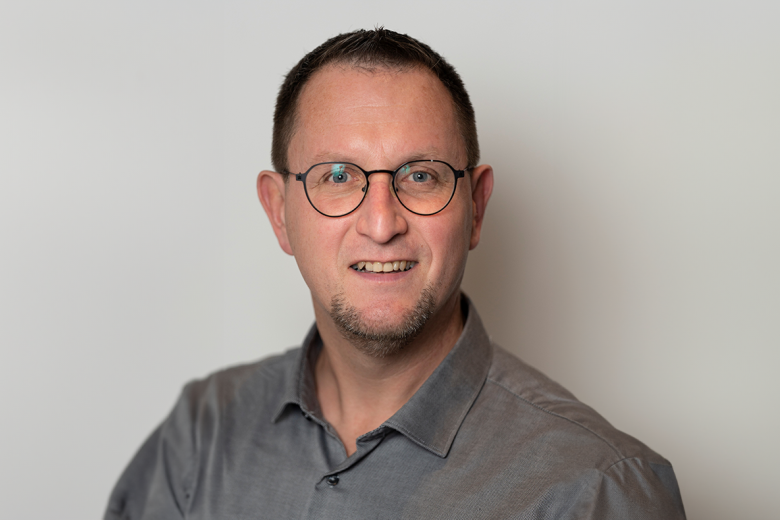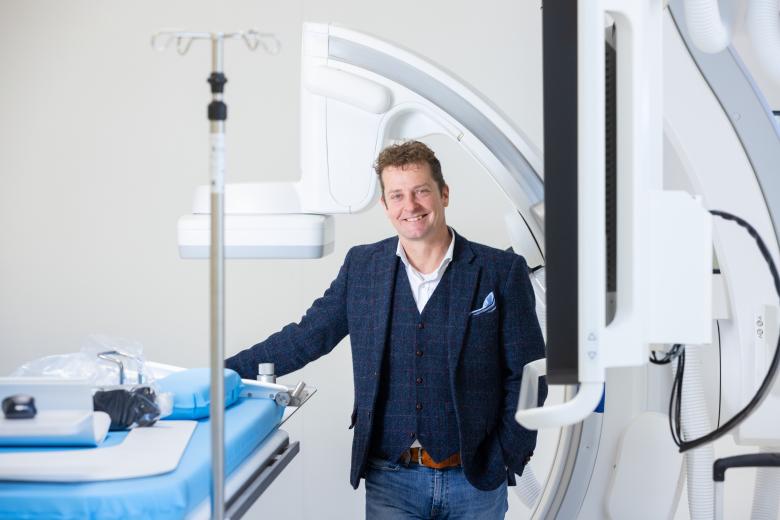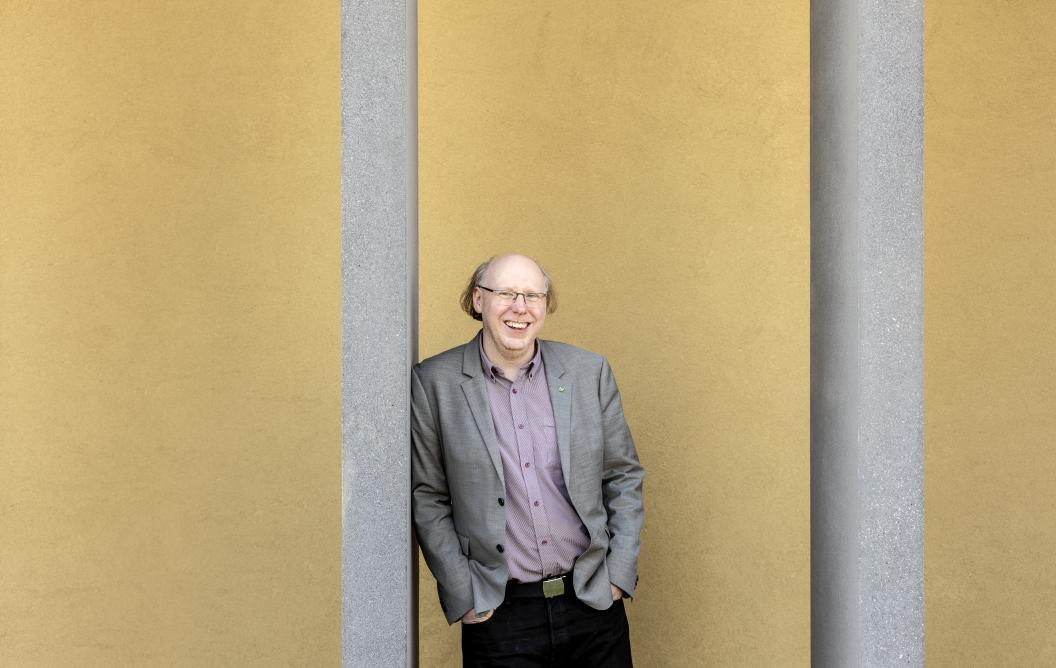Looking back to the big bang
Just hours before this interview, he signed the lease on a semi-detached house in Herzogenrath. “It’s the last stop in Germany on the new train connection between Aachen and Maastricht”, Stefan Hild explains. “That way my children don’t have to learn a third language at school.” Hild, who was born in Germany, joined Maastricht University as professor of Gravitational Research on 1 August.
Einstein
The conversation with Hild takes place in February on a sunny day, literally and figuratively. It’s the day UM officially joins the Dutch National Institute for Subatomic Physics (Nikhef). Hild has flown over for the occasion from Scotland, where he holds a chair in gravitational wave research at the University of Glasgow. “Three years ago I thought I’d spend the rest of my life in Scotland”, he admits.
“And then there was Brexit. Another one of those coincidences that’s shaped my career. For one thing, I never would’ve thought an opportunity like what’s going to happen here in Maastricht would ever come up. I even fell into research on gravitational waves by chance. As a child I was mainly into nature and biology; we had a big vegetable garden at home. I grew up with the development of the first home computers and the start of the internet, but I was especially fascinated by renewable energy. For that, I had to study physics, but actually, I found almost everything in science interesting. In another era I would probably have studied climate science or neuroscience. During my studies in Hanover, Professor Karsten Danzmann pointed me to a nice side job: together with some researchers from the UK, the gravitational waves group was building a detector near Hanover, the GEO 600. As a student, I helped build the clean rooms, paint the walls. Later we got our own lab and were able to focus more on aspects of laser interferometry. That’s how I ended up in the world of gravitational wave research.”
In his early years in Glasgow, Hild still found the time to lecture on his first love, renewable energy and smart grids. “Every modern scientist should have interests that go beyond their specific field of research. It always pays off. For example, using techniques that we need for the design of a gravitational wave detector, we developed smart chargers for laptops, which can help to stabilise the electricity grid and make it more suitable for renewable energy production.”
In 2015, a gravitational wave emitted by two merging black holes was observed – a spectacular discovery. “This was really just the start, the birth of a new way of doing astronomy and cosmology. Since then we’ve observed 10 black hole mergers and the collision of two neutron stars. From just a few seconds’ worth of signals we’ve generated a wealth of information that has changed our view of the cosmos. We now have concrete evidence of the existence of many black holes we didn’t know about before. We can shed light on the stiffness of neutron stars, and even answer more ‘down-to-earth’ questions like where heavy metals such as gold and platinum come from.
“These are things we’ve been able to figure out using the advanced LIGO and VIRGO detectors, which were developed and built over the past few decades. At some point those devices will have reached their use-by date. What we’re going to do in Maastricht is work on a new generation of detectors, initially the ET Pathfinder and hopefully also the Einstein Telescope. These detectors will allow us to see black hole mergers across the entire universe. It’ll be like reading a history book on the universe: we’ll be able to see when the first stars were formed, or maybe even go right back to the big bang.”
Blue-sky science
Hild values the special sense of community among scientists in gravitational wave collaborations. “Our community is really unique. Of course there’s competition between the different collaborations to build the most sensitive observatory, but once the data has been recorded, we all work together to analyse it and to find coincidence signals in observatories around the world. But it’s not just the gravitational wave community: when we observed the merger of a pair of neutron stars in 2017, we wrote a paper which included not only all gravitational wave researchers, but also about a third of all astronomers in world. More than 4,000 scientists working together – fantastic!
“Of course, this is classic ‘blue-sky science’, but it’s not as though the first ever microscope was made with the specific aim of developing medicines. Curiosity is the first requirement. At the same time, I want to make clear that the sizable financial injections in this type of research also pay for themselves. Think of the enormous economic impact for companies that are ultimately involved in actually constructing a detector like the Einstein Telescope. Not to mention the multiple applications of the technologies we develop for devices like this. In my current group in Glasgow, we’ve ‘loaned’ some of our techniques to photonics research and the development of sensors in mobile phones. They’ve even been used to enhance the understanding of what drives the crumbling of stone in medieval Scottish castles.”
Stefan Hild (1978) who has taken up a Professorship in Fundamental Physics at Maastricht University since 1 August, will lead the local efforts towards the realisation of the Einstein Telescope. Hild has been active in gravitational wave research for the past 20 years and he has been part of the international team which discovered gravitational waves from two colliding black holes in 2015.
Text: Mark van der Linde
Photo: Philip Driessen
Also read
-
Working at UM: “a life-changing experience”
"I am proud that our new Circular Plastics group published its first completely in-house research," Kim Ragaert says. She founded the research group three years ago, when she moved to Maastricht. Her work has laid the foundations for many innovations in the field of plastic recycling, and she is...

-
How does the universe taste?
Gerco Onderwater investigates the flavour of the universe while guarding the flavour of the Maastricht Science Programme. On 31 May, during his inaugural lecture, he provided a pre-taste of his work in Maastricht.

-
Bridging the gap between technology and clinical practice
Lee Bouwman, a vascular surgeon and endowed professor of Clinical Engineering, specialises in the implementation of groundbreaking healthcare technologies. The key to success, he says, lies in the collaboration between engineers and clinicians. This approach has already resulted in a range of...

